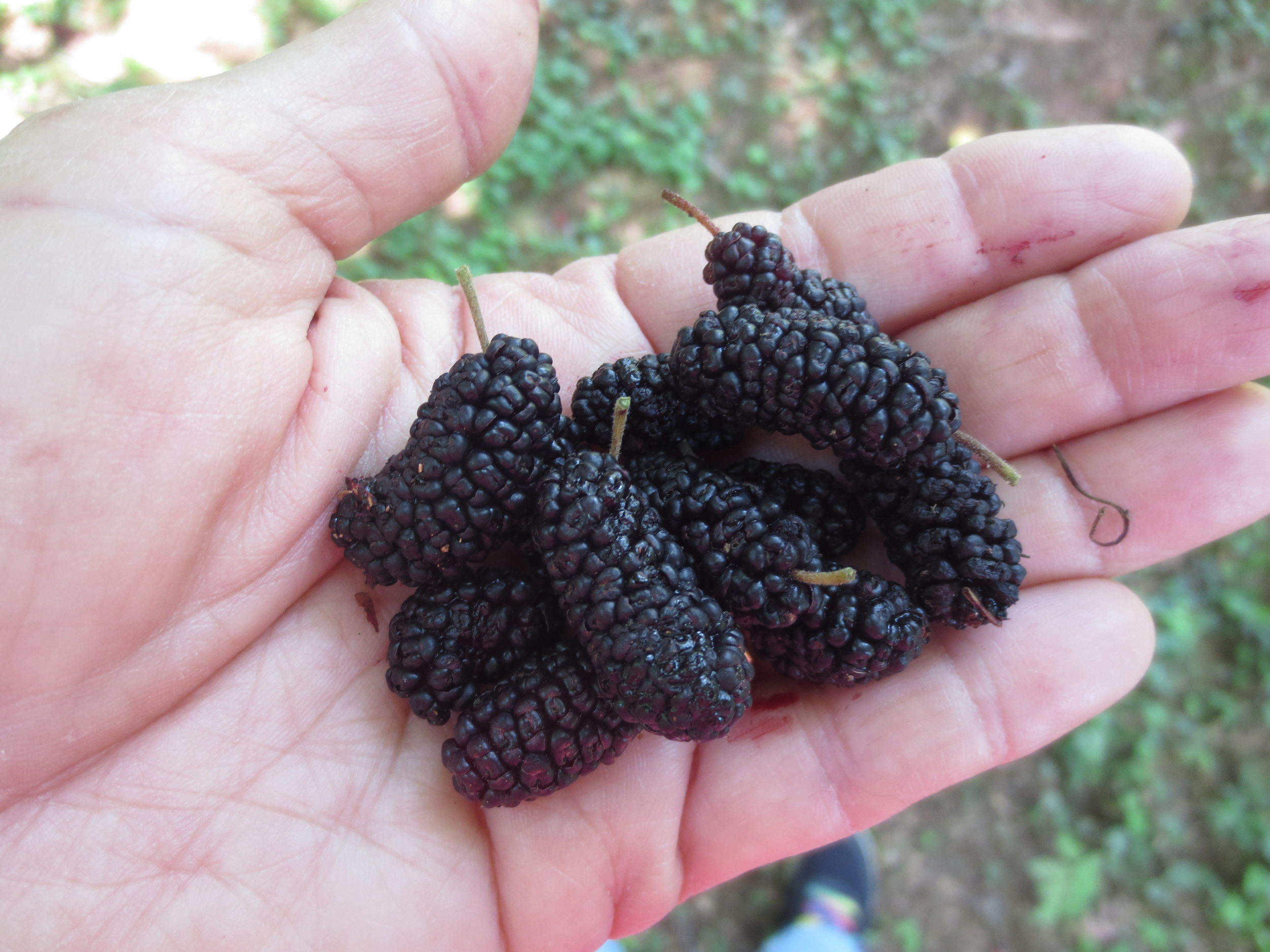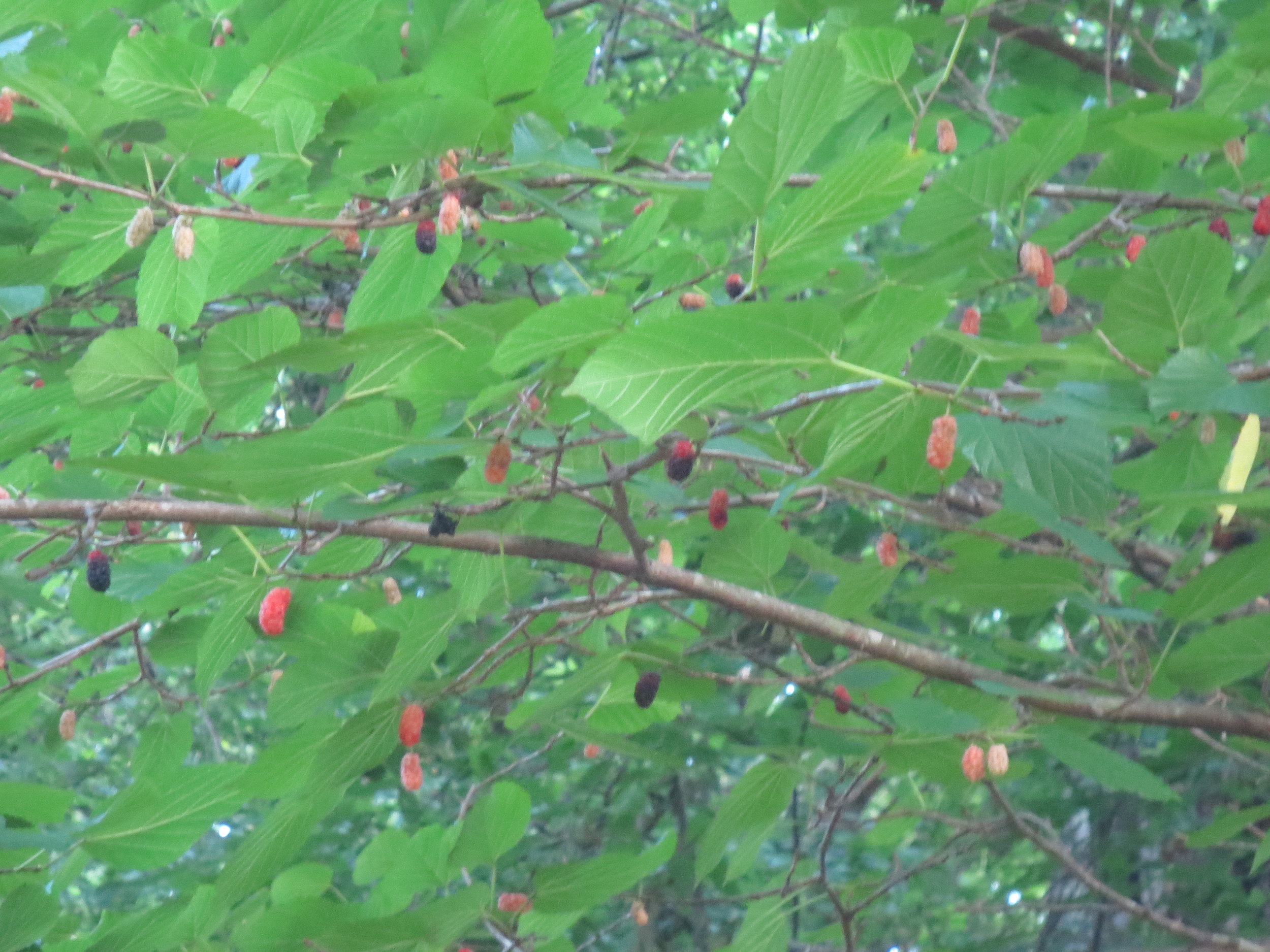The edges of our woodlands are dotted with mulberry trees. This understory tree is native to the eastern US. It bears prolific fruits that ripen from white to red to a rich, shiny black. The fruits are loved by a variety of songbirds, opossums, squirrels, and Mary Snoddy. Deer browse the young leaves but tend to ignore the mature ones.
The red mulberry (Morus rubra) reaches heights up to 70 feet. It often branches low into a multi-stemmed tree rather than having a single trunk. Red mulberry can be distinguished from its cousin, the white mulberry (Morus alba) by its rough-textured leaves. The white mulberry has shiny leaves and tends to be shorter, reaching 30 to 40 feet. In winter, one can identify the mulberry by its zig-zag stems, similar to redbud (Cercis).
The leaves vary in shapes. Some are lobed, almost like white oak, while others are heart-shaped. See this website for photographs: https://www.invasiveplantatlas.org/subject.html?sub=6050 . Silkworms only eat leaves of the white mulberry. (I've never seen a silkworm on ours.)
The mulberry can be either dioecious (has both male and female blooms on the same tree, so can pollinate itself) or monoecious (needs a separate tree to pollinate). The male blooms are green catkins that hang like pieces of green fringe. The female blooms are white and smaller. Some research indicates that the red can be pollinated by the white. Fruiting is always prolific at New Hope Farm.
Ripe fruit looks a lot like blackberries. They are delicious. The stem does not separate from the fruit, so it is impossible to eat them without getting the juice on your fingers. WARNING: It stains fingers, clothing, cars, sidewalks, and anything else it touches. If you wish to harvest the fruit (for jams, jellies, beverages or baking), you can place an old sheet or tarp on the ground under the tree and shake the limbs. Ripe fruit falls readily.


